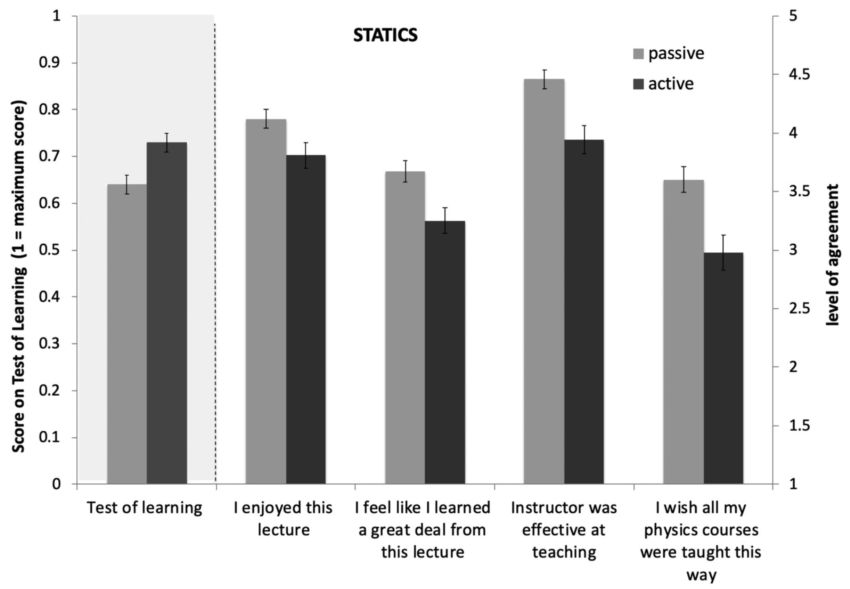A new PNAS paper concludes:
… Comparing passive lectures with active learning using a randomized experimental approach and identical course materials, we find that students in the active classroom learn more, but they feel like they learn less. We show that this negative correlation is caused in part by the increased cognitive effort required during active learning. …
While this experiment was limited to entitled Harvard undergrads, the results should be of general interest to any university administrators who still don’t understand how student course evaluations create bad incentives for good teaching. Of course those deans who just want to use evaluations to measure “customer satisfaction” won’t care about the results:

The last thing we want is to cause students to increase their cognitive effort.
I can attest to the following
1. I have done “active learning” in various forms for at least 25 years
2. Many comments on teaching evaluation accused me of not teaching since I generally of load the concept of learning the material onto the students via various active learning techniques
3. Some of the students that actually are paying attention to my methodology do see how the learning really does occur, but they are in the minority.
So yes, passive recipients of professorial canned material very much endorse that as learning, and are highly resistant to any exercises that “forces” the learning upon them.
So, nice to see a study that confirms this.
One could say, though, that they’ve found a way to make instruction modestly more effective by making it modestly more unpleasant. Interesting, but not clear whether that’s a practical improvement (nor one students should sign on for).
Not all cognitive effort is unpleasant, even when the effort is quite heavy. An excellent instructor might figure out a way to get the best of these alternatives by figuring out an engaging, effective cognitive workload.
One would not know from the paper that there is a lot of controversy over whether “active learning” is really more effective, over time, in a transferable, scalable way.
But also, the paper itself reveals that the “passive” learning protocol was not the usual one for this class. p. 2 right hand column:
“The use of handouts and focus on problem solving was different from the usual lectures in these courses. Using the
taxonomy of Stains (12), these classes in the control group were strictly didactic in approach, with none of the supplemental group activities found in the usual class meetings”
Kind of a red herring here? As if there are only two alternatives, fully “active” learning, and lectures in which the lecturer does nothing but talk the whole time. I would wager that most of us try to do something in between.
I would tend to agree, having read about some controlled experiments, that what is effective in attaining more learning is not necessarily what makes the students happiest.
There’s a “You can always tell a Harvard man…” joke in there somewhere.
“The Dangers of Fluent Lecturers”
https://bit.ly/32uswyo